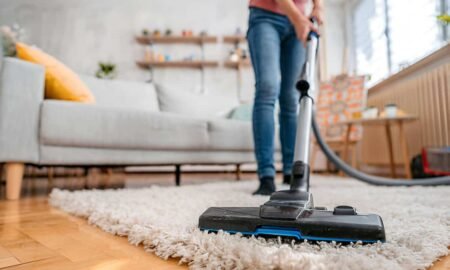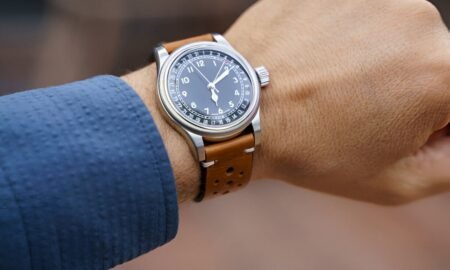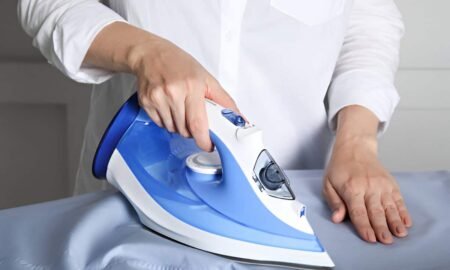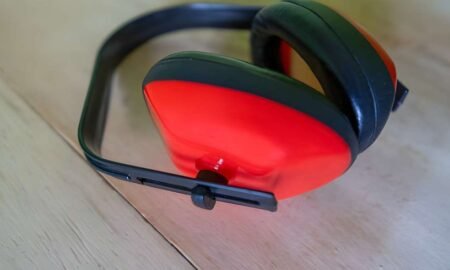Water Dispenser
The Ultimate Guide to Choosing the Best Water Dispenser for Your Home or Office
In our quest for healthier living and better hydration, the kind of water we drink is crucial. This is where water dispensers come in, offering a simple way to access cold, room temperature, or hot water with just a button press. Whether you’re craving a refreshing glass of water, a hot cup of tea, or need to prepare a quick meal, a water cooler dispenser has become an essential item in modern homes and offices. We understand the importance of not just any water, but high-quality water that tastes great and supports our health goals. With various options available, from countertop models to freestanding units, choosing the right water cooler dispenser can significantly enhance our daily water intake, helping us stay hydrated and energized throughout the day.
Outline of the Article
- Introduction
- Why You Need a Water Cooler Dispenser
- Convenient Access to Refreshing Water
- Promotes Hydration and Health
- Saves Time and Money
- Environmentally Friendly
- Factors to Consider When Choosing a Water Cooler Dispenser
- Type of Water Cooler Dispenser
- Size and Capacity
- Filtration System
- Maintenance and Cleaning
- Energy Efficiency
- Budget
- Different Types of Water Cooler Dispensers
- Bottled Water Dispensers
- Bottleless Water Dispensers
- Countertop Water Dispensers
- Bottom Load Water Dispensers
- Maintaining and Cleaning Your Water Cooler Dispenser
- Sanitizing the Dispenser
- Preventing Mold and Bacteria Growth
- Troubleshooting Common Issues with Water Cooler Dispensers
- Dispenser Not Dispensing Water
- Water Tastes or Smells Unpleasant
- Leaks or Drips
- Dispenser Making Strange Noises
- Dispenser Not Cooling or Heating Water
- Conclusion
- FAQs
Introduction
Water is essential for life, and staying properly hydrated is crucial for our overall well-being. While tap water is readily available, it might not always meet our preferences in terms of convenience, temperature, or taste. This is where a water cooler dispenser comes into play—a device that can transform our daily water consumption. Whether at home or in the office, a water cooler dispenser offers an efficient, convenient, and eco-friendly solution to fulfill our hydration needs.
With so many options on the market, how do you choose the right water cooler dispenser for your needs? This comprehensive guide will delve into the benefits of having a water cooler, the key factors to consider when purchasing one, and tips for maintaining and troubleshooting your dispenser to ensure it functions properly.
Why You Need a Water Dispenser
Convenient Access to Refreshing Water
One of the main advantages of a dispenser is the convenience it offers. Imagine having instant access to cold, room temperature, or hot water whenever you want, without the hassle of waiting for the kettle to boil or the fridge to chill a pitcher. With a water dispenser, refreshing water is just a button press away, making it simple for you, your family, or your colleagues to stay hydrated effortlessly.
Promotes Hydration and Health
Staying hydrated is essential for our health. It aids digestion, keeps skin clear, supports kidney function, and enhances cognitive performance. Yet, many struggle to drink enough water daily. A water dispenser serves as a constant reminder and motivation to boost our water intake. By seamlessly incorporating hydration into our everyday lives, we are more likely to meet our daily water consumption targets.
Saves Time and Money
Having a water dispenser can save you both time and money. With quick access to hot or cold water, you won’t have to make frequent trips to the store for bottled water or waste time waiting for water to chill or boil. Economically, a dispenser is a wise investment. Rather than purchasing numerous bottles of water, a one-time purchase with minimal upkeep can last for years.
Environmentally Friendly
Water coolers are an excellent eco-friendly choice. By reducing the use of single-use plastic water bottles, we can help decrease plastic waste and pollution. Many water dispensers utilize refillable containers or connect directly to the water supply, which significantly cuts down on plastic consumption. Furthermore, some models are designed with energy-efficient cooling and heating systems, which helps to further reduce our carbon footprint. Transitioning to a water dispenser is a positive move towards more sustainable living and working environments.
Factors to Consider When Choosing a Water Cooler Dispenser
When selecting the right water cooler dispenser, there are several important factors to keep in mind. By taking these into account, you can choose a dispenser that suits your needs and fits seamlessly into your lifestyle.
Type of Water Cooler Dispenser
There are various types of water dispensers on the market, each designed for different needs and preferences. Freestanding models are popular due to their large capacity and versatility, providing both hot and cold water options. Tabletop water coolers are more compact, making them ideal for smaller spaces, though they may have a reduced capacity. Bottleless water dispensers connect directly to a water line, offering an endless supply of water without the hassle of replacing bottles.
Factors to Consider When Choosing a Water Cooler Dispenser
When it comes to selecting the right water cooler dispenser, there are several key factors to consider. By keeping these in mind, you can find a dispenser that meets your needs and integrates smoothly into your lifestyle.
Type of Water Cooler Dispenser
There are many types of water dispensers available, each catering to different needs and preferences. Freestanding models are favored for their large capacity and versatility, providing both hot and cold water options. Tabletop water coolers are more compact, making them perfect for smaller spaces, although they may have a lower capacity. Bottleless water dispensers connect directly to a water line, providing an endless supply of water without the inconvenience of changing bottles.
Size and Capacity
The physical dimensions and water capacity of a water cooler dispenser are key factors to consider. For larger offices or homes with high water consumption, opting for a cooler with a bigger capacity can reduce the frequency of refills or bottle changes. Conversely, if space is at a premium, a more compact dispenser might be the better choice. It’s all about striking the right balance between the space you have and your hydration needs.
Filtration System
Water quality is a significant concern for everyone. Many water dispensers come equipped with built-in filtration systems that remove contaminants and improve taste. The effectiveness of the filtration system and the need for regular filter changes will greatly influence your choice of dispenser.
Maintenance and Cleaning
To ensure your water dispenser operates effectively and the water you drink is safe, regular maintenance and cleaning are essential. Look for models that are easy to clean and maintain, and check if the manufacturer provides clear instructions for these tasks. Some water coolers even offer self-cleaning features, which can be a fantastic advantage for those wanting to save time.
Energy Efficiency
Water coolers differ in their energy efficiency, which can affect both the environment and your utility bills. Choosing an energy-efficient model is not only a more eco-friendly option but can also lead to savings over time. When comparing water dispensers, be sure to check for energy ratings or certifications.
Budget
Your budget will certainly play a significant role in your decision-making process. Water coolers are available in a wide range of options, from budget-friendly tabletop models to high-end bottleless systems. While it might be tempting to go for the cheapest option, consider the long-term benefits and potential savings that come with choosing a higher-quality model that meets your specific needs.
Different Types of Water Cooler Dispensers
When looking for the perfect water cooler dispenser for your home or office, it’s essential to understand the various types available. Each type offers unique benefits and is designed to meet specific needs. Let’s take a closer look at some of the most common water dispensers.
Bottled Water Dispensers
Bottled water dispensers are one of the most popular choices. These units use large water bottles, typically 18.9 liters, which are placed on top of the dispenser. They are very versatile and can be set up anywhere there is room, as they don’t require a direct water line connection.
Bottleless Water Dispensers
Bottleless water dispensers, also known as point-of-use dispensers, connect directly to a water supply. This type removes the need for bottled water, making it a more environmentally friendly and cost-effective option.
Countertop Water Dispensers
Countertop water dispensers are compact models designed to sit on a countertop, making them ideal for small offices or kitchens with limited space. Depending on the model, they can be either bottled or bottleless.
Bottom Load Water Dispensers
Bottom load water dispensers offer a contemporary take on the classic bottled water setup. Rather than having to lift heavy bottles to place them on top, the bottle is conveniently loaded into the bottom of the unit, making it easier to access and minimizing physical effort.
Maintaining and Cleaning Your Water Cooler Dispenser
Keeping your water dispenser clean and hygienic is essential for ensuring the quality of the drinking water it dispenses. In this section, we will explore the best practices for maintaining your water coolers in excellent condition.
Sanitizing the Dispenser
Sanitizing your water cooler dispenser should be a regular part of your maintenance routine. We suggest doing this every 3 to 6 months, depending on how often it is used and the guidelines provided by the manufacturer.
Preventing Mold and Bacteria Growth
Mold and bacteria thrive in damp environments, which means that water dispensers can become a breeding ground if they aren’t properly maintained. To prevent mold and bacteria growth, it’s essential to clean regularly, keep surfaces dry, use high-quality water sources, ensure good air circulation, and follow replacement schedules.
Troubleshooting Common Issues with Water Cooler Dispensers
Even the best water dispensers can experience issues from time to time. Here are some common problems you might face and tips for troubleshooting them.
Dispenser Not Dispensing Water
If your dispenser isn’t dispensing water, first check for possible causes such as blockages in the system, power issues, or an empty water bottle.
Water Tastes or Smells Unpleasant
If you detect unpleasant tastes or odors, it may be due to insufficient cleaning. Be sure to change the filters as recommended and properly sanitize the dispenser.
Leaks or Drips
Leaks can happen due to a misaligned or damaged bottle, a loose connection, or a malfunction in the internal components of the dispenser.
Dispenser Making Strange Noises
If your water cooler is producing unusual noises, it could signal a problem with the compressor, fan, or water pump.
Dispenser Not Cooling or Heating Water
If your water cooler isn’t cooling or heating as it should, first check the thermostat settings and make sure the unit isn’t too close to any heat sources.
Conclusion
Choosing the right water cooler dispenser is an important decision that can significantly impact your daily life. Whether you’re looking for convenience, better hydration, or a more environmentally friendly option, there’s a water cooler dispenser that meets your needs. By considering the factors outlined in this guide, you’re well on your way to finding the ideal water cooler dispenser for your home or office. Remember, regular maintenance and promptly addressing any issues will ensure you enjoy clean, refreshing water for years to come.
FAQs
1. How often should I clean my water cooler dispenser?
It’s recommended to clean and sanitize your water cooler dispenser every 3 to 6 months to ensure it’s free from mold, bacteria, and other contaminants.
2. Can I use tap water in a bottled water dispenser?
Yes, you can use tap water, but it’s advisable to use a water filtration system or purchase filtered water to ensure the best taste and quality.
3. What is the difference between a bottled and a bottleless water dispenser?
A bottled water dispenser uses large water bottles that need to be replaced when empty, while a bottleless dispenser connects directly to your water supply, providing an endless supply of water without the need for bottles.
4. Are water cooler dispensers energy efficient?
Many modern water coolers are designed to be energy efficient. Look for models with energy-saving features and certifications to ensure minimal impact on your energy bill.
5. How do I prevent my water cooler from leaking?
Regular maintenance, proper bottle placement, and ensuring all components are securely connected can help prevent leaks.
6. What should I do if my water cooler isn’t cooling the water?
Check the thermostat settings, ensure the cooler is placed away from heat sources, and consult the manufacturer’s guide for specific troubleshooting steps.











